Wine course in Alsace to learn about making and ageing wines
- Categories :
- Gifts
- Wine
- Wine Making
- Gourmet Odyssey
- Domaine Stentz-Buecher
- Alsace
It should never be forgotten that winemaking begins in the vineyard, and indeed, without good grapes, it's not possible to make a quality wine. Our day therefore started with a quick visit to the vineyard, which also allowed us to see our adopted vines!
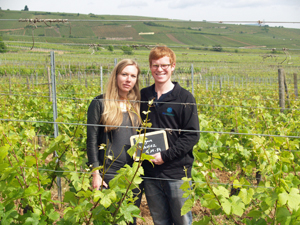
The Vinification Experience Day is the day where we taste the most wines. To help us find the words to describe our impressions when tasting wines, we participated in a workshop on the aromas found in wine. With the help of some small bottles of essence, we tried to identify the fruity and floral aromas that are typical of the white wines from Alsace. An exercise that isn't as simple as you might think!
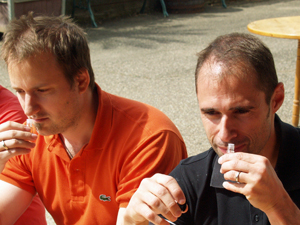
With our noses now finely tuned, we went down into the cellar to see the oak casks and stainless steel vats that are used to hold the wine during the fermentation and ageing periods. Each plot of vines and grape varietal is vinified separately, and Stéphane explained how the wines change during the alcoholic and malo-lactic fermentations, and the work needed to prepare the wines before being bottled.
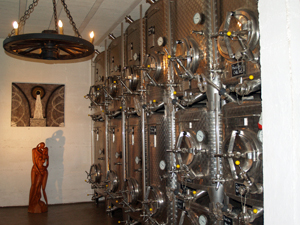
We tasted a couple of wines that are still in the process of ageing. The first was the Pinot Gris Rosenberg 2014, which has yet to finish its malo-lactic fermentation. We could see that the wine was still cloudy and fizzed a little, both of which are entirely at this stage.
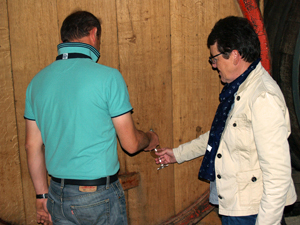
The second wine was a Riesling Ortel which was still in its alcoholic fermentation phase, showing that we can't always control everything, and the profession of being a winemaker calls for lots of patience.
We then tasted some of the finished wines to appreciate the range and complexity of the wines made at Domaine Stentz-Buecher. We started with a very floral Pinot Blanc 2013, followed by the Pinot Gris Rosenberg 2013. We then tasted a Riesling Steingrübler Grand Cru 2008, a Gewurztraminer Pfersigberg Grand Cru 2008 and a Gewurztraminer Hengst Grand Cru 2008. We continued to taste other wines with one of the local specialties, choucroute.
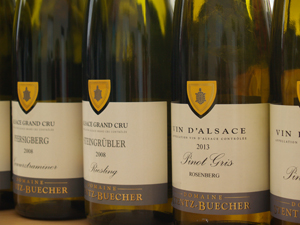
After lunch, we returned to the cellar to see the machines used for bottling and labelling the wine bottles. We also had a long discussion on the choice of corks versus screw tops.
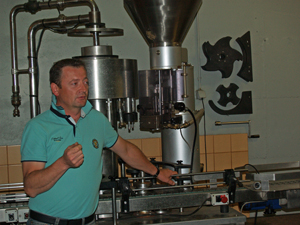
The winery also produces Crémant d'Alsace sparkling white wine. Stéphane showed us how the bottles are turned to collect the sediment in the neck of the bottle, and we learnt about the specific work needed to make sparkling wine.
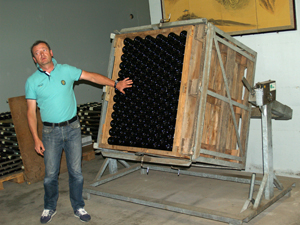
Then a last little tour of the cellar to see the red wines that are resting in oak barrels, before finishing in the wine library, where a selection of the winery's wines dating back to 1995 are stored.
Other articles relating to wine tasting
Comments
No comments.




